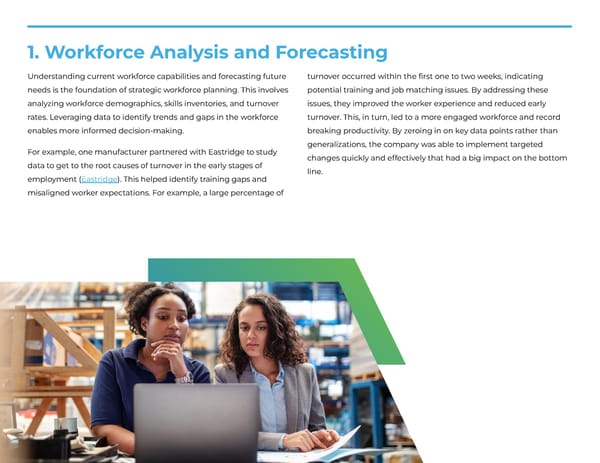1. Workforce Analysis and Forecasting Understanding current workforce capabilities and forecasting future turnover occurred within the ûrst one to two weeks, indicating needs is the foundation of strategic workforce planning. This involves potential training and job matching issues. By addressing these analyzing workforce demographics, skills inventories, and turnover issues, they improved the worker experience and reduced early rates. Leveraging data to identify trends and gaps in the workforce turnover. This, in turn, led to a more engaged workforce and record enables more informed decision-making. breaking productivity. By zeroing in on key data points rather than generalizations, the company was able to implement targeted For example, one manufacturer partnered with Eastridge to study changes quickly and effectively that had a big impact on the bottom data to get to the root causes of turnover in the early stages of line. employment (Eastridge). This helped identify training gaps and misaligned worker expectations. For example, a large percentage of
 Strategic Workforce Planning: A Key to Manufacturing Success Page 3 Page 5
Strategic Workforce Planning: A Key to Manufacturing Success Page 3 Page 5